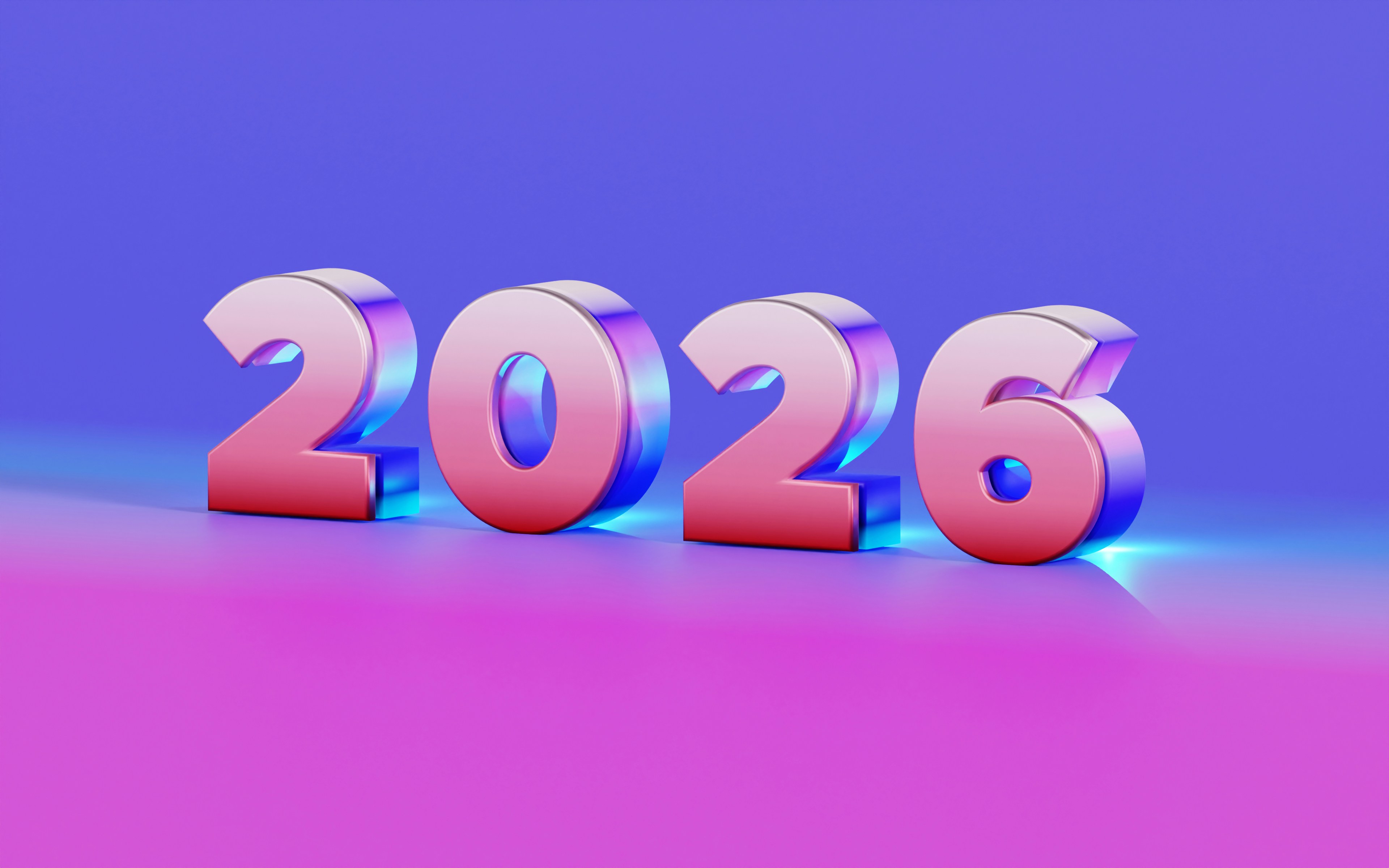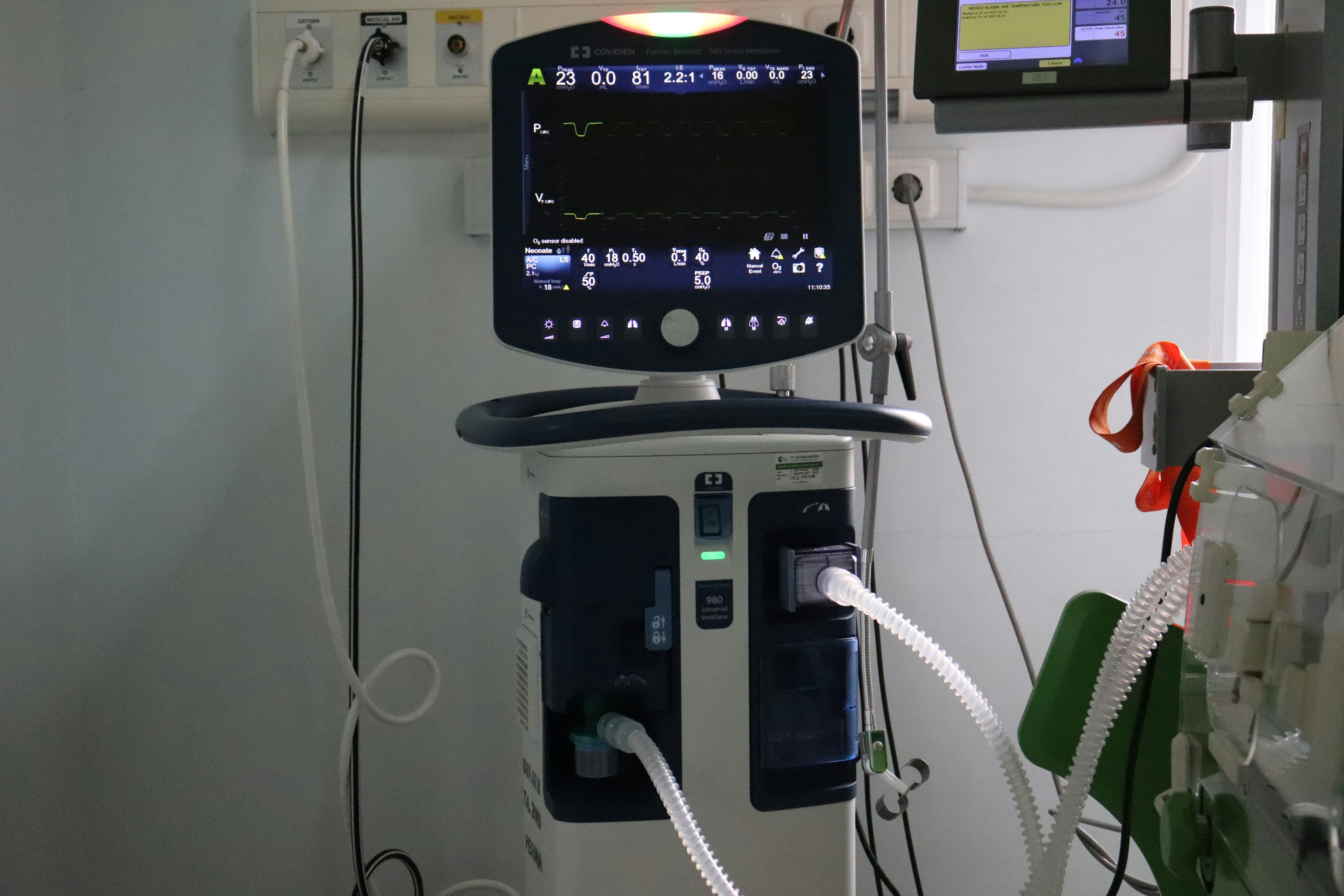
Medical Technology Hiring Trends 2026: What to Watch Out For (For Job Seekers & Recruiters)
As we move into 2026, the medical technology (MedTech) jobs market in the UK is changing fast. Hospitals and health systems are under pressure to do more with less. Diagnostics and devices are becoming smarter, more connected and more regulated. AI, robotics and remote monitoring are no longer “future tech” – they’re being built into mainstream care pathways.
At the same time, budgets are tight, funding cycles are uneven and some healthtech start-ups are consolidating or being acquired. That means fewer vague “innovation” roles and more focus on medical technology jobs that directly support regulatory approval, patient safety, NHS adoption and commercial growth.
Whether you are a MedTech job seeker planning your next move, or a recruiter building teams for medical device, diagnostics or digital health companies, this guide breaks down the key medical technology hiring trends for 2026.
1. A Tougher Market Overall – But MedTech Still Outperforms
The wider tech and life sciences jobs market is still mixed. We’ve seen:
Healthtech and telehealth companies that boomed during the pandemic now operating under tighter budgets.
Some device manufacturers restructuring portfolios and delaying non-core projects.
Investors becoming more selective about which digital health and MedTech businesses they back.
Despite this, medical technology remains a strategic priority:
Health systems need better diagnostics, monitoring and devices to manage ageing populations and long-term conditions.
Hospitals and clinics want automation, digital tools and AI to reduce waiting lists and workforce pressure.
Governments and payers are looking for proven technologies that improve outcomes and reduce overall costs.
In practice this means:
Fewer “nice-to-have” innovation roles that are not clearly tied to patient pathways or commercial strategies.
More demand for specialists in regulatory affairs, clinical affairs, quality, health economics, reimbursement, product management and field clinical engineering.
Hiring that favours candidates who understand both technology and healthcare delivery.
For MedTech job seekers
Expect interviews to zoom in on real impact: improved diagnostic accuracy, faster procedures, reduced readmissions, better compliance, or time saved for clinicians.
On your CV, emphasise outcomes, not just tasks. For example:
“Supported launch of Class IIb device in X market, contributing to Y% revenue growth in the first 12 months.”
“Implemented device training programme that reduced user errors by 30% in three NHS trusts.”
Prepare short case studies with a clear storyline: clinical or operational problem → your role → technology solution → measurable impact.
For recruiters and hiring managers
Tie every MedTech hire to clear business and clinical objectives: regulatory approval, market access, adoption in NHS trusts, improved patient outcomes, or service efficiencies.
Rewrite generic job descriptions into specific ones: state device class, therapeutic area, type of technology, target markets and key metrics.
Allow extra time to fill niche profiles such as regulatory specialists, health economists, clinical application specialists and medical software safety engineers.
2. AI, Digital Health & Connected Devices – Reshaping MedTech Roles
By 2026, the boundaries between MedTech, digital health and health IT are almost gone. Many traditional device companies now:
Integrate sensors, connectivity and cloud dashboards into their products.
Use AI or machine learning in imaging, signal processing and decision support.
Offer subscription or service-based business models alongside hardware.
This significantly changes hiring patterns:
Less demand for roles that focus purely on stand-alone hardware without software or data aspects.
More demand for software and firmware engineers, data scientists with clinical understanding, AI/algorithm engineers, interoperability specialists and cyber security experts with medical context.
Growth in hybrid roles such as Clinical AI Product Manager, Digital Health Implementation Specialist, Connected Device Architect and Medical Data Engineer.
For medical technology job seekers
Position yourself for this shift by:
Building basic familiarity with software, connectivity and data flows, even if your background is hardware or life sciences.
Understanding the difference between traditional medical devices, software as a medical device (SaMD) and wellness apps.
Gaining exposure to standards and concepts like interoperability, data privacy and secure device design.
On your CV, you can highlight:
“Worked with software and data teams to integrate device outputs into hospital EHR systems and clinician dashboards.”
“Collaborated on algorithm development for diagnostic support, validating performance against clinical ground truth.”
For recruiters
Scope roles around end-to-end product ecosystems: sensor or device → connectivity → cloud → analytics and AI → clinician or patient-facing application.
Make clear in adverts how much of the role is hardware, software, data, regulatory, clinical liaison or implementation.
Be ready for candidates to ask about your digital strategy: data platform, AI roadmap, cyber security posture and integration with existing health systems.
3. Entry-Level Squeeze: Getting a First MedTech Role Is Harder
Like other tech and life science areas, entry-level MedTech hiring is under pressure:
Routine lab testing, basic documentation and simple software tasks are increasingly automated, standardised or outsourced.
Many companies are cautious about adding headcount in early-stage or speculative projects.
For early-career medical technology candidates, this means:
Fewer roles that involve purely basic lab work or simple technical support.
Higher expectations even for junior jobs: employers often look for internships, industrial placements, or health-related projects rather than only academic credentials.
For early-career MedTech candidates
Build a visible portfolio of applied work:
Final-year projects linked to devices, diagnostics, digital health or human factors.
Placements in hospitals, MedTech companies, diagnostics labs or healthtech start-ups.
Volunteering or student projects where you supported clinicians or patients using digital tools.
Consider stepping-stone roles such as field service engineer, applications specialist, junior clinical research associate, technical support for devices, or junior product analyst.
Look for graduate schemes in medical device, diagnostics, imaging and healthtech companies, or in broader life sciences with strong MedTech components.
On your CV, emphasise:
Practical exposure to clinical environments, even if short-term (e.g. time spent in theatres, cath labs, imaging departments or GP practices).
Understanding of basic medical terminology and patient pathways relevant to your chosen area (cardiology, orthopaedics, oncology, intensive care, etc.).
Enthusiasm for regulatory, safety and quality disciplines – not just “cool tech”.
For recruiters and employers
Cutting junior intake entirely may save short-term costs but creates long-term succession risk.
Build structured early-career routes with clear training: rotations through R&D, clinical support, regulatory, quality, implementation or product.
Design assessments that recognise potential: problem-solving, communication, ability to understand clinician needs – not just a list of previous job titles.
4. Regulation, Quality & Clinical Evidence: Governance Takes Centre Stage
Medical technology is one of the most regulated and safety-critical sectors. In 2026, regulatory expectations and scrutiny continue to rise for:
Medical devices and diagnostics.
Software as a medical device (SaMD).
AI-based tools and clinical decision support.
This is driving strong demand for roles in:
Regulatory Affairs (RA) – device classification, technical documentation, submissions, vigilance.
Quality Assurance (QA) – ISO 13485, quality management systems, audits and CAPA.
Clinical Affairs – clinical investigations, post-market studies, real-world evidence, registries.
Medical Safety & Vigilance – post-market surveillance, risk management, safety reporting.
These governance roles are increasingly integrated into product teams rather than functioning as isolated departments.
For medical technology job seekers
If you have a scientific, engineering or clinical background plus an interest in documentation, standards and evidence, this is a very strong niche.
Learn the basics of medical device regulations and quality systems, and how they differ between markets (for example, UK, EU and US).
Highlight any experience in:
Writing or reviewing protocols, IFUs, risk assessments or clinical evaluation reports.
Supporting audits, inspections or design reviews.
Working with clinicians on data collection and endpoint definition.
For recruiters & hiring managers
Be explicit whether a role is primarily RA, QA, clinical affairs, safety, or a hybrid. Many candidates are wary of “catch-all” job titles.
Expect high demand and competition for experienced RA and clinical professionals.
Position governance and evidence roles as strategic enablers of market access and patient safety, not “paperwork” – this increases their appeal.
5. Skills-Based Hiring Beats Job Titles
Job titles in MedTech vary wildly: Clinical Specialist, Field Application Specialist, Product Manager, Biomedical Engineer, Medical Software Engineer, Health Data Scientist, Regulatory Affairs Manager, Clinical Scientist and many more.
In 2026, more employers are moving to skills-based hiring for medical technology roles:
Less emphasis on an exact previous title.
More emphasis on what candidates can actually do: understand clinical workflows, manage risk, design safe products, support adoption, and drive commercial results.
This matters especially as people move between:
NHS or clinical roles and MedTech industry posts.
Pharmaceuticals, diagnostics and device companies.
Hardware and software-focused segments of MedTech.
For candidates
Make your skills obvious by structuring your CV around:
Clinical domains (e.g. cardiology, orthopaedics, oncology, radiology, intensive care, primary care).
Product types (implants, capital equipment, diagnostics, software platforms, wearables, remote monitoring, robotics).
Functional skills (R&D, clinical support, training, implementation, product management, RA/QA, health economics).
Use outcomes-focused bullet points rather than generic duties. For example:
“Trained over 200 clinicians on new device platform across 10 hospitals, achieving 95% satisfaction scores and rapid adoption.”
“Led redesign of user interface for monitoring system, reducing common user errors and improving medication safety.”
For recruiters
Define roles in terms of clinical area, technology type, stage in lifecycle (development vs post-market) and key outcomes rather than just “5+ years in MedTech”.
Stay open to candidates from adjacent backgrounds – for example, a radiographer moving into imaging applications; a nurse into clinical implementation; an NHS analyst into healthtech product.
Probe for learning agility: how have candidates adapted to new devices, regulations or health system changes?
6. Platform-Specific & Technology-Critical Skills: New “Must-Haves” for 2026
Just as software roles are becoming stack-specific, medical technology roles in 2026 are increasingly platform-specific. Organisations want people who understand the nuances of particular technology domains, such as:
Imaging and Diagnostics – MRI, CT, ultrasound, PET, X-ray, digital pathology, point-of-care testing, lab diagnostics.
Cardiology and Monitoring – ECG, telemetry, wearables, implantable devices, remote monitoring, home-based diagnostics.
Surgical and Interventional – robotics, navigation systems, minimally invasive instruments, theatre integration.
Diabetes and Chronic Disease Management – pumps, sensors, apps, decision support, integrated care pathways.
Rehabilitation and Assistive Technologies – exoskeletons, orthotics, prosthetics, neurostimulation, virtual rehab.
Within each, there is growing focus on:
Connectivity, interoperability and cyber security.
Human factors and usability engineering.
Data capture, analytics and real-world evidence generation.
For MedTech job seekers
To align with medical technology hiring trends in 2026:
Choose one or two clinical or technology domains to specialise in and build depth there.
Gain experience across the lifecycle where possible: concept → design and verification → validation → launch → post-market support.
On your CV, be precise. For example:
“Supported clinical evaluations for AI-assisted CT imaging software in X hospitals, helping to demonstrate reduced reporting time.”
“Led usability testing for wearable cardiac monitoring device, identifying design changes that improved patient adherence.”
For recruiters & hiring managers
In adverts, clearly specify: therapeutic area, technology type, regulatory class and level of field vs office work.
Recognise that some areas (e.g. AI diagnostics, robotics) have a limited pool of experienced candidates; consider hiring on strong fundamentals and upskilling.
Encourage cross-domain knowledge sharing: for example, AI safety best practice, human factors methods or regulatory learnings from one product line to another.
7. Health System Context: MedTech Roles Across Settings
Medical technology hiring in 2026 is strongly shaped by where the technology is used. The same skillset looks different in:
Hospitals and Secondary Care – high-acuity devices, imaging, theatre equipment, intensive care, cardiology, emergency departments.
Primary Care and Community – diagnostics, remote monitoring, digital tools that support GPs, nurses and allied health professionals.
Home and Consumer Health – connected devices, wearables, digital therapeutics, adherence tools, wellness and coaching apps.
Lab and Research – specialised diagnostic platforms, research tools, clinical trial technologies.
For job seekers
Think about where you want to see your work used: in theatres, clinics, patients’ homes, labs, or across entire health systems.
Tailor your CV to the pressures and metrics of that setting:
In hospitals: throughput, waiting times, safety incidents, length of stay, procedure efficiency.
In primary care and community: accessibility, earlier diagnosis, self-management, reduced burden on GP appointments.
At home: adherence, engagement, usability, integration with clinical teams.
Don’t overlook roles in implementation, training and change management – these are critical to real-world impact and in high demand.
For recruiters
Be clear in job descriptions about the environments candidates will work in: theatres, wards, community settings, remote.
Collaborate with clinical and operations leaders to define what “success” looks like for each role and product.
Highlight opportunities for candidates to spend time in real care settings – this is a big attraction for many MedTech professionals.
8. Pay, Perks & Retention: MedTech Talent Still in Demand
Medical technology salaries in the UK vary widely by role and sector, but experienced professionals – especially in regulatory affairs, clinical affairs, complex engineering and commercial leadership – remain in strong demand.
Key dynamics in 2026:
Pay is competitive but not always at the very top of the tech market; however, MedTech often offers greater purpose and stability than some pure tech sectors.
Employers are competing on overall package: hybrid or flexible working (where compatible with field roles), development budgets, support for professional registration, time in clinical environments, and opportunities to work on meaningful health challenges.
Retention is increasingly about career pathways: movement between clinical support, product management, RA/QA, commercial roles or people leadership.
For candidates
Treat your MedTech expertise as a long-term career asset – particularly if you build a strong profile in a specific clinical or technology area.
When comparing offers, consider:
Type of product and patient impact.
Access to clinicians, patients and real-world feedback.
Investment in training, conferences and specialist courses (for example, regulatory, health economics or human factors).
Culture and leadership approach to clinical safety, ethics and evidence.
Negotiate around development and exposure opportunities, not just base salary.
For recruiters & employers
To attract MedTech professionals in 2026, you must show more than “we work in healthcare”: articulate your clinical impact, evidence base, and long-term roadmap.
Invest in retention levers such as:
Structured development pathways (technical specialist, clinical expert, product leader, people manager).
Fortnightly or monthly clinical exposure days for engineers and product teams.
Support for additional training (e.g. regulatory, clinical research, UX, health economics).
Build a culture of collaboration between clinical and technical teams – this is a major retention factor for many MedTech specialists.
9. Action Checklist for MedTech Job Seekers in 2026
To align your career with medical technology hiring trends in 2026, use this practical checklist:
1. Deepen your domain and platform skills
Pick one or two clinical areas or technology platforms (e.g. cardiology monitoring, imaging, surgical robotics, diagnostics, rehab tech) and build visible expertise.
Combine technical understanding with real awareness of clinical workflows and constraints.
2. Rewrite your CV around clinical and commercial impact
Replace “involved in product development” with “contributed to design and validation of X device, which enabled Y outcome (e.g. faster diagnosis, reduced procedure time)”.
Use strong verbs: designed, validated, implemented, trained, supported, optimised, improved, reduced, enabled.
Quantify outcomes wherever possible: time saved, error reduction, adoption rates, revenue or market expansion.
3. Build governance, safety and evidence awareness
Learn the basics of the regulatory and quality environment for your target products.
Highlight any experience in risk management, usability testing, safety reviews, clinical evaluations or real-world evidence projects.
If you enjoy this work, consider training in RA/QA, clinical research or health economics to open up additional career paths.
4. Develop communication and collaboration skills
Practise explaining your technology to clinicians and patients in clear, non-technical language.
Build confidence in presenting at cross-functional meetings, clinical training sessions or product demos.
Show examples of collaboration across engineering, clinical, commercial, operations and support teams.
5. Be strategic about your job search
Target companies whose products and values align with your interests – for example, improving access, supporting clinicians, tackling specific diseases or transforming diagnostics.
Decide if you prefer start-ups, scale-ups, large MedTech multinationals, diagnostics companies or digital health providers.
Use specialist job boards like medicaltechnologyjobs.co.uk to find focused medical technology jobs in the UK, rather than relying only on generic job sites.
6. Keep learning and stay adaptable
Plan regular updates to your knowledge: new guidelines, emerging device categories, AI and software innovations, reimbursement shifts.
Engage with professional networks, conferences, webinars and clinical events.
Be open to lateral moves that build breadth – for example, from clinical support into product management, or from R&D into clinical affairs or implementation.
10. Action Checklist for MedTech Recruiters & Hiring Teams in 2026
For recruiters, talent acquisition leads and hiring managers, here is how to align your strategy with 2026 medical technology hiring trends:
1. Build a clear MedTech workforce strategy
Map where technology will make the most difference: diagnostics, monitoring, surgery, chronic disease management, rehab, workflow tools.
Identify key roles across engineering, clinical support, regulatory, quality, product, health economics and commercial functions.
Decide which skills you must hire externally, which you can build internally, and which you’ll access via partners or service providers.
2. Modernise job descriptions
Replace generic “MedTech experience required” language with detail on clinical area, device class, software/hardware mix and responsibilities.
Clarify how each role supports the product lifecycle: concept, development, regulatory, launch, adoption, post-market.
Highlight opportunities for clinical exposure, training and progression.
3. Use hiring technology carefully
Use tools to widen reach and manage applications, but ensure humans review promising candidates with non-traditional backgrounds (e.g. clinicians, NHS staff, other life sciences).
Design realistic assessments: case studies around clinical workflows, safety trade-offs or implementation challenges, rather than abstract puzzles.
Be transparent about timelines, interview stages and what good looks like.
4. Invest in early-career pipelines and internal mobility
Create graduate and trainee programmes that rotate across clinical, technical and commercial teams.
Offer retraining for clinicians and NHS staff moving into MedTech roles, and for engineers moving into regulatory, quality or clinical affairs positions.
Encourage internal moves between roles – for example, field clinical specialists into product management, or engineers into implementation and training.
5. Use the right channels and honest messaging
Advertise medical technology roles on specialist boards like medicaltechnologyjobs.co.uk, where candidates are specifically looking for MedTech jobs in the UK.
Tailor adverts: more technical detail for engineering roles; clinical focus for field and applications roles; strategy and market access detail for product and HEOR roles.
Be honest about challenges – integration with NHS systems, evidence requirements, adoption barriers – as well as the opportunities. Many strong candidates are motivated by solving these real problems.
Final Thoughts: Adapting to Medical Technology Hiring Trends in 2026
Medical technology sits at the intersection of healthcare, engineering, software and regulation. In 2026 we will see:
More emphasis on connected devices, AI-enabled diagnostics and digital health platforms.
Fewer loosely defined “innovation” roles, but richer careers for those who understand both clinical reality and robust technology delivery.
Growing demand for regulatory, quality, clinical affairs, implementation and product specialists who can bridge gaps between teams.
A decisive shift towards skills-based, outcome-focused and clinically-aware hiring.
For MedTech job seekers, the priority is clear: deepen your domain and platform expertise, demonstrate clinical and commercial impact, understand governance and safety, and build strong communication skills.
For recruiters and hiring leaders, success in 2026 means aligning your hiring strategy with your clinical and commercial roadmap, investing in early-career and cross-functional talent, and using the right channels to reach committed medical technology professionals.
If you are ready to take the next step – whether you want to find your next medical technology job in the UK or hire specialist MedTech talent – make medicaltechnologyjobs.co.uk a central part of your 2026 hiring and career strategy.


